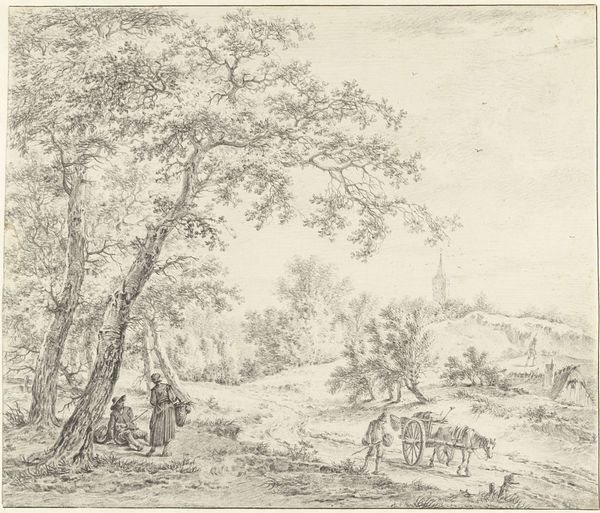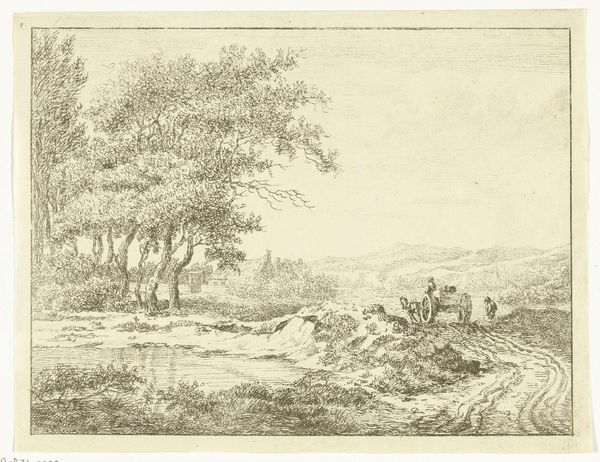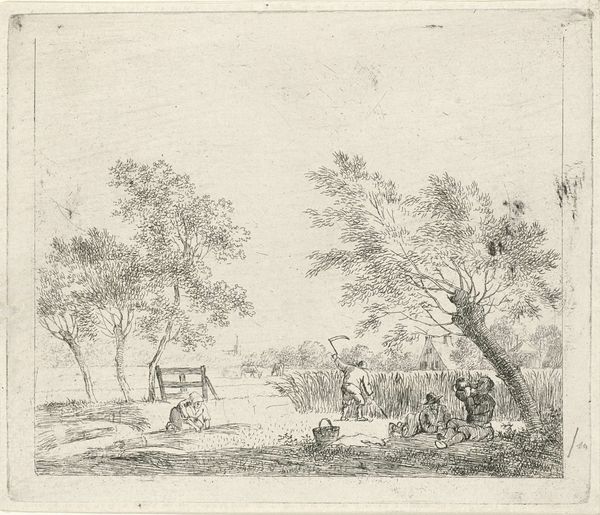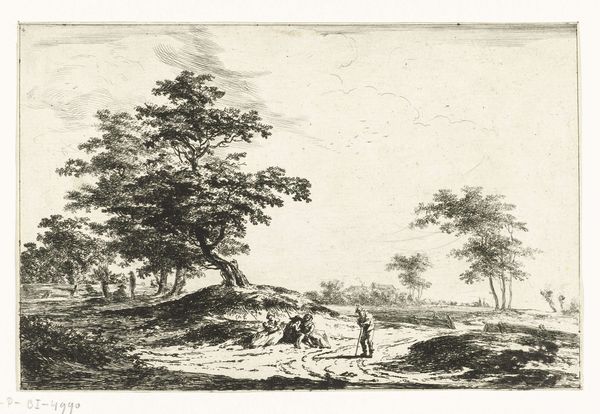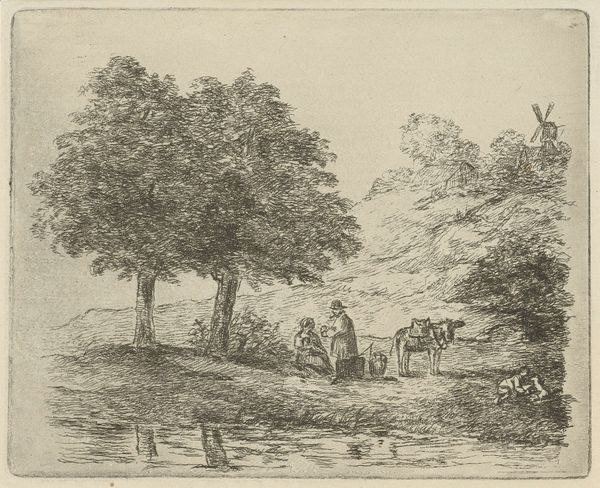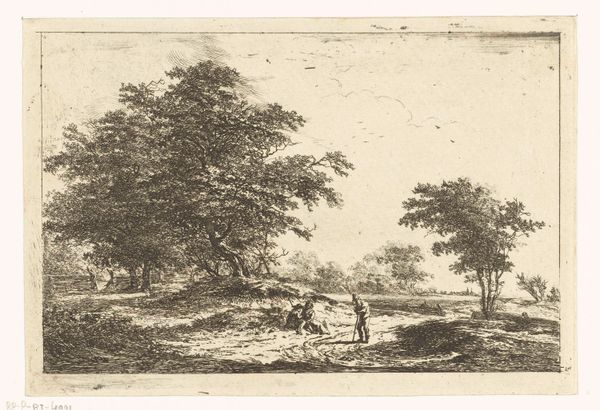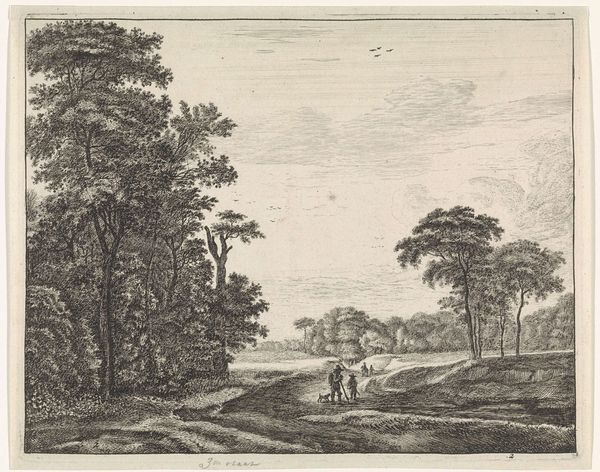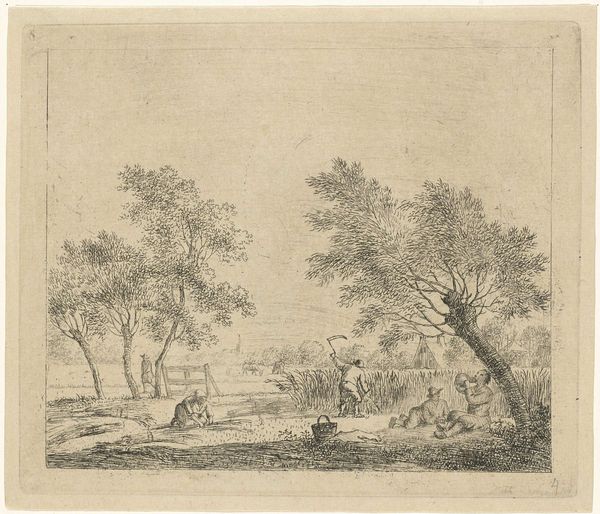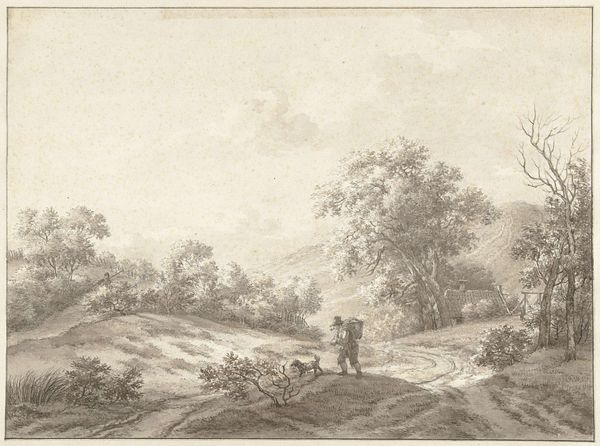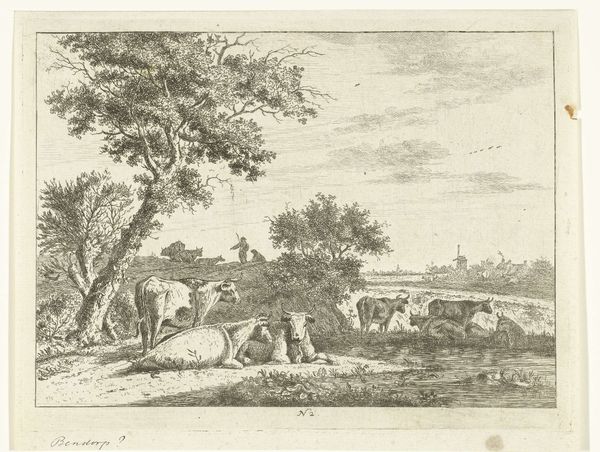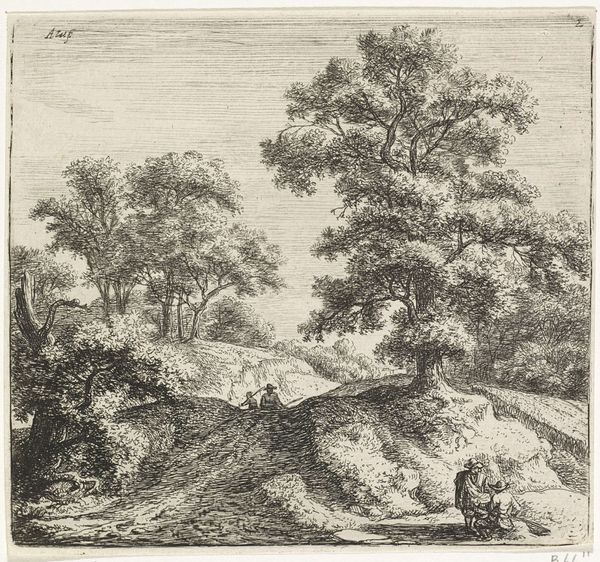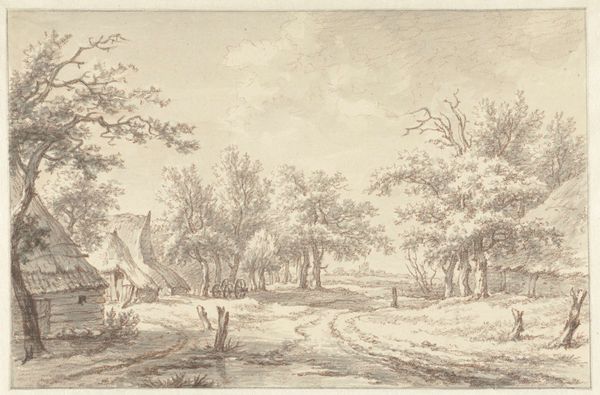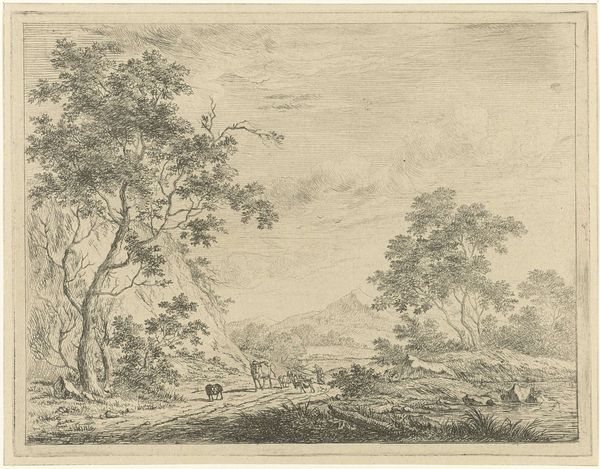
Dimensions: height 164 mm, width 209 mm
Copyright: Rijks Museum: Open Domain
Editor: This is "Landschap met boerderij en koeien", or "Landscape with Farm and Cows", an etching by Johannes Janson, made sometime between 1761 and 1784. It feels like a very idyllic scene. What can you tell me about this kind of image? Curator: Well, idyllic is certainly one way to put it, but it's crucial to consider *whose* idyll this is. During this period, the Dutch countryside was being carefully cultivated and presented as a symbol of national identity. Images like this weren't just pretty; they reinforced ideas about land ownership, productivity, and even social hierarchy. Notice how the cows, though seemingly peaceful, are essentially symbols of agricultural wealth and a well-managed landscape. How do you think images like this were viewed by those who didn't own land? Editor: I hadn’t thought about that. So, these weren’t just landscapes, but also social statements? Is that why the farm looks so well kept, or idealized? Curator: Exactly! It speaks to the evolving role of art in shaping national narratives and justifying social structures. It's not merely representing the world; it’s constructing a specific vision of it, influencing how viewers perceived Dutch society and their place within it. Notice the technique: How do the sharp lines and detailed rendering contribute to this sense of order and control? Editor: They definitely do add to that controlled feel. It’s like everything has its place, even in nature. That’s so different from how I usually think about landscape art. Thanks! Curator: My pleasure. Reflecting on the societal functions of the pastoral art encourages viewers to consider its potential influence.
Comments
No comments
Be the first to comment and join the conversation on the ultimate creative platform.
